Table of content
- Roasting: Caramelization for Depth
- Steaming: Gentle and Nutrient-Rich
- Sautéing: Quick and Flavorful
- Mashing: A Low-Carb Twist on Potatoes
- Ricing: The Base for Grain-Free Bowls
- Roasted Cauliflower with Tahini-Lemon Dressing
- Creamy Cauliflower Soup with Crispy Chickpeas
- Cauliflower “Fried Rice” with Vegetables and Tofu
- Cauliflower Pizza Crust
- Buffalo Cauliflower Wings
- Q: Why does my cauliflower taste bitter?
- Q: How do I prevent soggy cauliflower?
- Q: Can I eat cauliflower raw?
- Q: How long does cauliflower last?
Cauliflower, a member of the Brassica oleraceae family, has emerged as a culinary superstar in recent years, celebrated for its versatility, mild flavor, and impressive nutritional profile. Once relegated to the sidelines as a bland steamed vegetable, cauliflower now stars in dishes ranging from pizza crusts and rice bowls to creamy soups and roasted medleys. This transformation is no accident—cauliflower’s ability to absorb flavors, adapt to various cooking methods, and deliver a hefty dose of vitamins and antioxidants makes it a kitchen champion. In this comprehensive guide, we’ll explore how to transform this humble cruciferous vegetable into meals that are both delectable and nutrient-packed, ensuring it earns a permanent spot on your weekly menu.
The Nutritional Powerhouse Behind Cauliflower
Before diving into recipes, it’s essential to understand why cauliflower deserves its health-food halo. A one-cup serving (100 grams) of raw cauliflower contains:
- 25 calories: Making it an ideal choice for calorie-conscious diets.
- 2 grams of protein: A rare feat for a vegetable.
- 5 grams of carbohydrates: With 2 grams of fiber, aiding digestion and promoting satiety.
- 77% of the Daily Value (DV) for vitamin C: A potent antioxidant that supports immune function and skin health.
- 20% of the DV for vitamin K: Crucial for blood clotting and bone metabolism.
- 11% of the DV for vitamin B6: Essential for brain development and function.
- 14% of the DV for folate: Vital for cell growth and DNA repair.
Beyond macronutrients, cauliflower boasts sulforaphane, a sulfur-rich compound linked to cancer prevention and reduced inflammation. It also contains choline, a nutrient important for brain health, and antioxidants like kaempferol and quercetin, which combat oxidative stress.
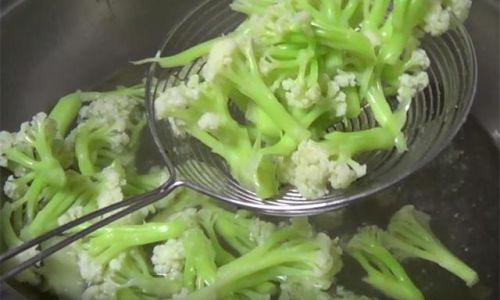
Cooking Methods That Elevate Flavor and Nutrient Retention
The way you cook cauliflower significantly impacts its taste, texture, and nutritional value. Here’s a breakdown of techniques to master:
Roasting: Caramelization for Depth
Roasting cauliflower at high heat (400–450°F/200–230°C) transforms its mild flavor into a nutty, caramelized delight. This method preserves nutrients while concentrating sugars, creating a crispy exterior and tender interior.
Pro Tip: Toss florets in olive oil, salt, pepper, and spices like smoked paprika or cumin before roasting. For added crunch, sprinkle with grated Parmesan or almond flour during the last 5 minutes.
Steaming: Gentle and Nutrient-Rich
Steaming cauliflower ensures minimal nutrient loss, particularly water-soluble vitamins like C and B. Use a steamer basket over boiling water for 5–7 minutes until tender. Enhance flavor by adding a bay leaf, garlic clove, or lemon slice to the water.
Pro Tip: Avoid oversteaming, which can lead to mushiness. Immediately transfer steamed cauliflower to an ice bath to halt cooking and preserve vibrancy.
Sautéing: Quick and Flavorful
Sautéing cauliflower in a hot pan with olive oil or coconut oil creates a slightly charred texture while retaining crispness. Add aromatics like garlic, ginger, or shallots for complexity.
Pro Tip: For a one-pan meal, toss sautéed cauliflower with chickpeas, spinach, and a drizzle of tahini.
Mashing: A Low-Carb Twist on Potatoes
Boil cauliflower until soft, then mash with garlic, Greek yogurt, and a splash of almond milk for a creamy, guilt-free alternative to mashed potatoes. Season with fresh herbs like chives or rosemary.
Pro Tip: Roast the cauliflower first for deeper flavor before mashing.
Ricing: The Base for Grain-Free Bowls
Pulse cauliflower florets in a food processor until they resemble rice grains. Sauté with onions, peas, and carrots for a quick stir-fry, or use as a pizza crust base (see recipe below).
Pro Tip: For extra crispiness, bake cauliflower rice at 400°F/200°C for 15 minutes before using.
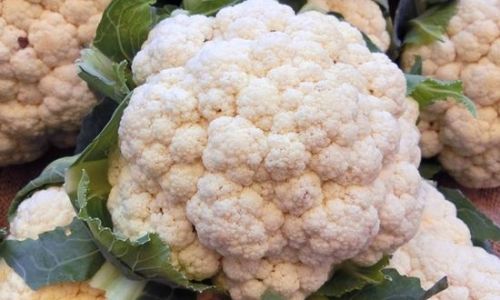
Recipes to Transform Cauliflower Skeptics into Fanatics
Roasted Cauliflower with Tahini-Lemon Dressing
Ingredients:
- 1 large cauliflower head, cut into florets
- 3 tbsp olive oil
- 1 tsp smoked paprika
- Salt and black pepper to taste
- ¼ cup tahini
- 2 tbsp lemon juice
- 1 garlic clove, minced
- 2 tbsp fresh parsley, chopped
Instructions:
- Preheat oven to 425°F/220°C. Toss cauliflower with olive oil, paprika, salt, and pepper.
- Roast on a baking sheet for 25–30 minutes, flipping halfway, until golden and crispy.
- Whisk tahini, lemon juice, garlic, and 2 tbsp water until smooth. Drizzle over roasted cauliflower and garnish with parsley.
Why It Works: The tahini dressing adds richness, while lemon brightens the dish. Smoked paprika introduces a subtle smokiness.
Creamy Cauliflower Soup with Crispy Chickpeas
Ingredients:
- 1 tbsp olive oil
- 1 onion, diced
- 3 garlic cloves, minced
- 1 head cauliflower, chopped
- 4 cups vegetable broth
- 1 tsp turmeric
- ½ cup coconut milk
- 1 can chickpeas, drained and patted dry
- 1 tsp paprika
Instructions:
- Sauté onion and garlic in olive oil until fragrant. Add cauliflower, broth, and turmeric. Simmer 20 minutes.
- Blend until smooth, then stir in coconut milk.
- Toss chickpeas with paprika and bake at 400°F/200°C for 20 minutes until crispy. Serve soup topped with chickpeas.
Why It Works: Turmeric adds anti-inflammatory benefits, while coconut milk lends creaminess. Crispy chickpeas provide textural contrast.
Cauliflower “Fried Rice” with Vegetables and Tofu
Ingredients:
- 1 head cauliflower, riced
- 1 block firm tofu, pressed and cubed
- 1 cup frozen peas and carrots
- 2 tbsp soy sauce (or tamari for gluten-free)
- 1 tbsp sesame oil
- 2 eggs, beaten (or scrambled tofu for vegan)
- 1 tbsp fresh ginger, grated
Instructions:
- Stir-fry tofu in sesame oil until golden. Set aside.
- Sauté cauliflower rice, peas, carrots, and ginger for 5 minutes. Push to one side of the pan.
- Pour eggs into the empty side and scramble. Mix everything together, then add soy sauce and tofu.
Why It Works: This dish packs 15 grams of protein per serving and mimics the texture of fried rice without the carbs.
Cauliflower Pizza Crust
Ingredients:
- 1 head cauliflower, riced
- ½ cup almond flour
- ¼ cup nutritional yeast
- 1 tsp dried oregano
- 1 egg (or flax egg for vegan)
- Salt and pepper
Instructions:
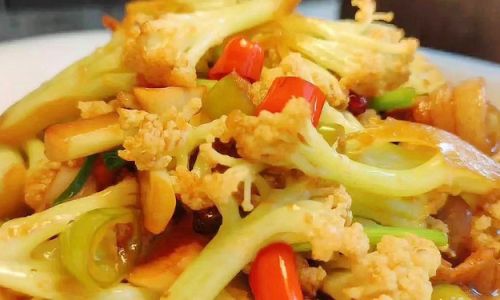
- Microwave cauliflower rice for 5 minutes, then squeeze out excess moisture.
- Mix with almond flour, nutritional yeast, oregano, egg, salt, and pepper.
- Press into a pizza shape on parchment paper and bake at 400°F/200°C for 20 minutes.
- Add toppings (marinara, veggies, vegan cheese) and bake 10 more minutes.
Why It Works: Each slice contains just 80 calories and 6 grams of net carbs, making it keto-friendly.
Buffalo Cauliflower Wings
Ingredients:
- 1 head cauliflower, cut into florets
- ½ cup almond flour
- ½ cup water
- 1 tsp garlic powder
- 1 cup hot sauce (e.g., Frank’s RedHot)
- 2 tbsp melted butter (or vegan butter)
Instructions:
- Preheat oven to 450°F/230°C. Whisk almond flour, water, and garlic powder.
- Dip florets into batter, shake off excess, and bake 20 minutes.
- Toss baked florets in a mix of hot sauce and melted butter. Bake 10 more minutes.
Why It Works: These “wings” deliver spicy, tangy flavor with 75% fewer calories than traditional wings.
Tips for Maximizing Flavor and Nutrition
- Embrace Spices and Herbs: Cauliflower’s neutral taste pairs well with cumin, coriander, turmeric, or harissa. Fresh herbs like cilantro or dill add freshness.
- Add Healthy Fats: Drizzle with olive oil, avocado, or tahini to enhance nutrient absorption (especially fat-soluble vitamins A, D, E, and K).
- Incorporate Acidity: A squeeze of lemon or vinegar brightens earthy flavors.
- Avoid Overcooking: Overboiling or over-roasting can lead to mushiness or bitterness. Aim for tender-crisp texture.
- Pair with Umami-Rich Foods: Combine with mushrooms, tomatoes, or miso paste for savory depth.
Addressing Common Cauliflower Concerns
Q: Why does my cauliflower taste bitter?
A: Bitterness can stem from overcooking or genetic factors. Blanch florets in salted water for 2 minutes before cooking to mellow the flavor. Alternatively, pair with sweet ingredients like caramelized onions or honey.
Q: How do I prevent soggy cauliflower?
A: Ensure thorough drying after washing. For roasting, use high heat and avoid overcrowding the pan. For steaming, use minimal water and a tight-fitting lid.
Q: Can I eat cauliflower raw?
A: Absolutely! Shred it into slaws, blend into smoothies, or dip raw florets into hummus. Raw cauliflower retains the most nutrients.
Q: How long does cauliflower last?
A: Store whole heads in the fridge for up to a week. Pre-cut florets last 3–4 days. Frozen cauliflower keeps for 8–12 months.
Conclusion: A Vegetable for Every Occasion
Cauliflower’s adaptability makes it a kitchen workhorse, capable of anchoring meals across cuisines and dietary preferences. Whether you’re seeking a low-carb alternative, a nutrient-dense side, or a creative way to sneak veggies into picky eaters’ diets, cauliflower delivers. By experimenting with cooking methods, spices, and pairings, you can elevate this cruciferous gem from mundane to magnificent. So next time you spot a head of cauliflower at the market, grab it with confidence—your taste buds and your body will thank you.
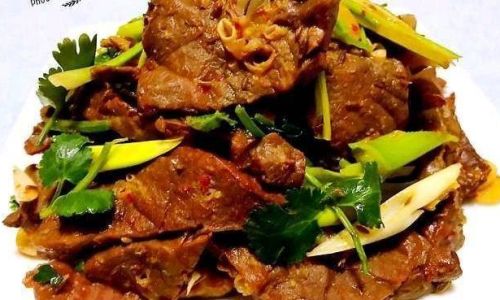
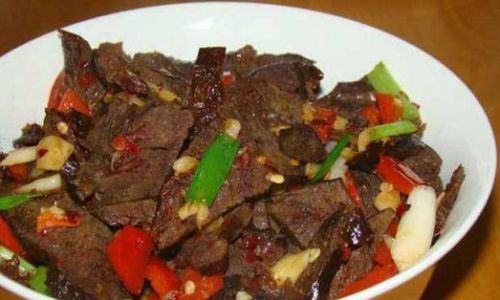
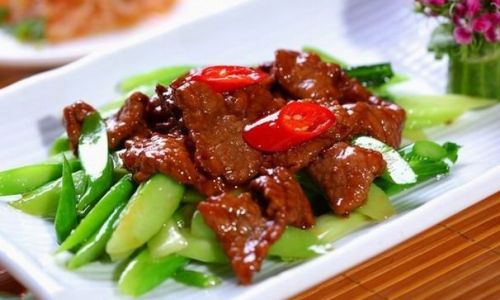


0 comments